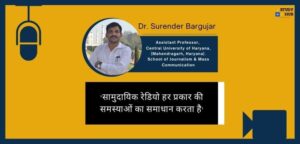The English newspaper that decided to drop the publication of editorials in 2010 was ______.
(A) The Times of India
(B) The Evening News
(C) DNA
(D) The Hindu
Correct Ans: (C)
Explanation:
In 2010, DNA (Daily News and Analysis) made a bold and controversial decision. It became the first major English-language newspaper in India to drop its editorial section. This move sparked wide debate in journalism circles and among readers. The decision raised one big question: do modern readers still value traditional editorials?
DNA argued that readers preferred facts and analysis over opinion. The editorial team believed that editorials, often seen as the newspaper’s official voice, no longer fit the fast-changing habits of media consumers. Instead of offering a single viewpoint, DNA wanted its reporting to speak for itself—letting readers draw their own conclusions.
Moreover, by dropping editorials, DNA claimed to focus more on reader-centric journalism. They aimed to strengthen credibility by keeping opinions out of news pages. This shift signaled a break from long-standing media traditions in India, where most papers included daily editorials as a way to shape public opinion.
Let’s compare the other choices. The Times of India, being one of the oldest and most influential newspapers in India, has always maintained a strong editorial section. The Evening News had a limited reach and was not known for any such move. The Hindu, with its deep-rooted editorial style and legacy of commentary, would never drop editorials—it is widely respected for them.
Therefore, DNA stands as the only correct answer. This move reflected its brand positioning at the time—sharp, analytical, and different from legacy publications. Even though it drew criticism from traditionalists, it also showed that media houses were willing to rethink long-held editorial norms.
In short, DNA’s 2010 decision marked a significant turning point in Indian journalism. It challenged conventional newsroom practices and highlighted the growing shift toward data, facts, and direct reporting—especially in the digital age.




















